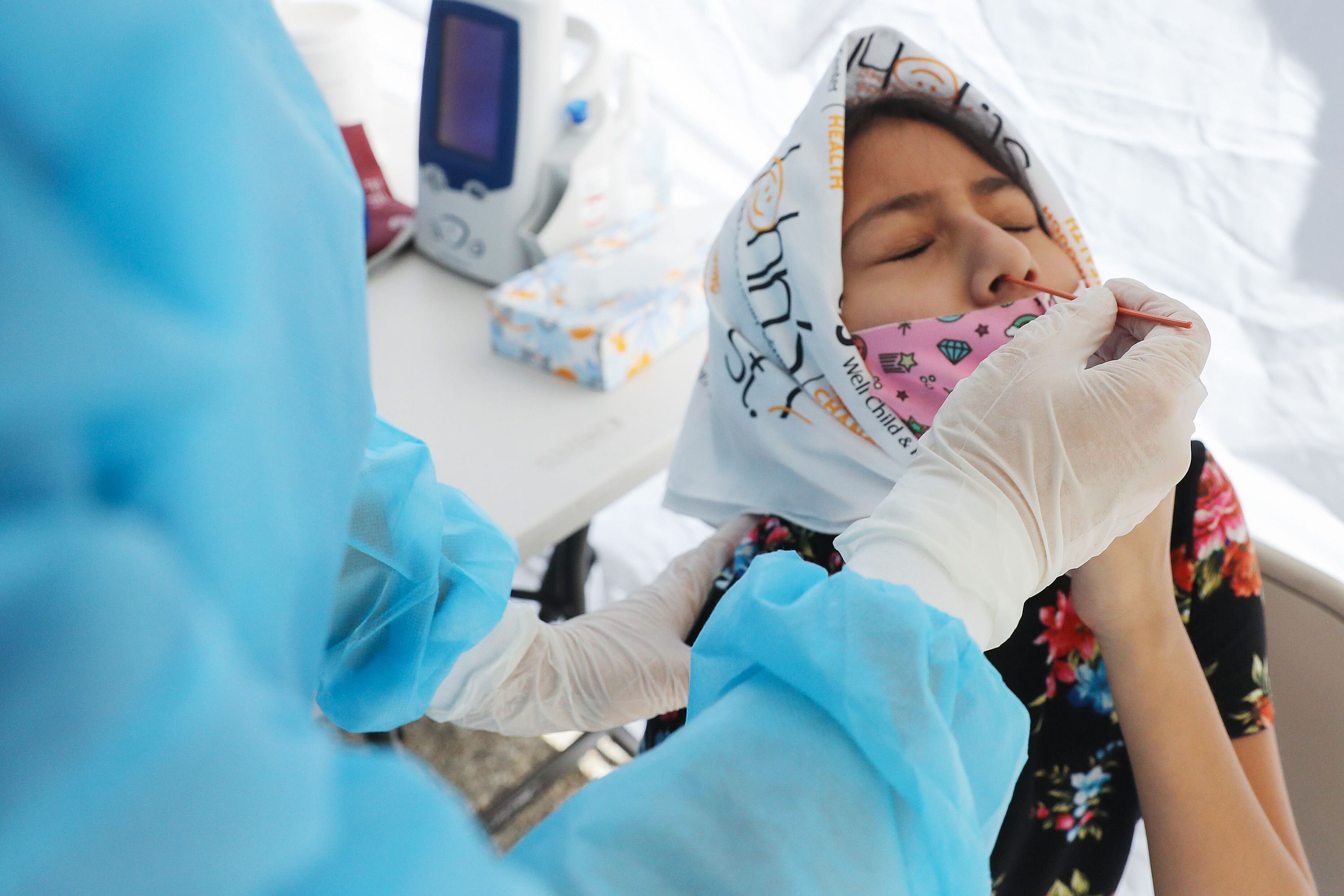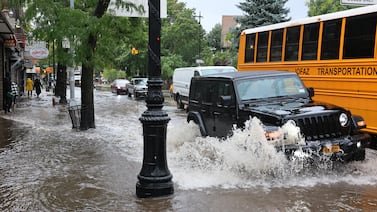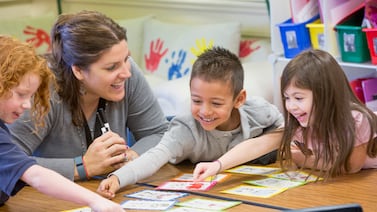Testing students for the coronavirus is poised to become the latest flash point as Newark prepares to reopen classrooms this spring.
The district has purchased air purifiers, desktop barriers, and hundreds of thousands of face masks, and is requiring teachers to test negative before returning to school buildings, which have been closed for nearly a year. But with in-person learning scheduled to resume in April, the district still hasn’t decided whether to test students for COVID-19 — a safety measure that has been “under consideration” since the summer.
Universal testing can catch asymptomatic infections and reassure wary teachers and families, yet it’s also costly and logistically complex; most public health experts say it’s beneficial but not essential. But as teachers are starting to get vaccinated for COVID-19, the Newark Teachers Union has made student testing a top priority.
“We believe it’s a prerequisite,” said union President John Abeigon, who is urging the district to test all middle and high school students, who are thought to be more susceptible to infection than younger children. “Our concern is asymptomatic kids giving it to each other and bringing the virus home.”
School districts nationwide have wrestled with whether or not to test students and staffers routinely for COVID-19. The Centers for Disease Control and Prevention say that in-school testing can reduce the risk of infections when combined with other mitigation strategies such as masking and social distancing, yet the benefits “need to be weighed against the costs, inconvenience, and feasibility.”
Despite the challenges, some districts have embraced testing as a way to ease families’ fears and appease teachers unions. New York City, the nation’s largest district, tests a random sample of 20% of students and employees at each open school every week. Chicago Public Schools agreed to test a subset of students weekly in areas with high infection rates as part of its school reopening deal with the teachers union. Last month, the Massachusetts teachers union applauded the state’s decision to offer universal testing at every public school.
President Joe Biden is looking to ramp up testing as part of his plan to reopen classrooms this spring. And the head of the nation’s second largest teachers union said widespread testing could allow schools to reopen while vaccines are still being administered.
“COVID-19 testing must become a way of life in schools: We need to test regularly and rapidly,” says an op-ed co-authored by American Federation of Teachers President Randi Weingarten and Dr. Rajiv Shah, president of the Rockefeller Foundation, which wants testing to be available at every school.
In New Jersey, some private schools have adopted testing, but few public schools have and the state has not mandated it. The Newark school district has ordered employees, but not students, to get tested before returning. It has not announced plans for routine testing for either group, which experts say is necessary for testing to help reduce infections. (The CDC says it is “not known” whether one-time testing is effective at curbing the virus’ spread.)
In July, Newark said it was considering testing students. And school board members said last month that the district met with a company that offers weekly COVID-19 tests that students self-administer using nasal swabs. The company’s pooled testing, which combines up to 25 test samples in one batch, would enable widespread testing and “allow parents to feel confident in sending their children back to school,” said board member Yambeli Gomez at a January meeting.
However, the district decided not to work with the vendor, Concentric by Ginkgo, a company spokesperson said Monday.
“The district has not made a decision with regards to testing students,” said district spokesperson Nancy Deering.
Other districts have adopted testing as a strategy for reopening schools, especially in communities like Newark where transmission rates remain high. Unlike temperature and symptom checks, frequent testing allows schools to identify infected people without symptoms, who may account for at least half of COVID-19 infections, according to research cited by the CDC.
Statistical models by the research firm Mathematica suggest that weekly testing of all students and staff members can reduce in-school infections by an estimated 50% in high schools and 35% in primary schools. Less frequent or staff-only testing diminishes the effectiveness and might not be a good way to reduce in-school infections, the researchers found.
Testing also has psychological benefits, said Divya Vohra, an epidemiologist and lead author of the Mathematica report, which examined six school districts using rapid-result tests.
“Finding a way to offer regular testing at a school really helped build trust in the community and helped people feel comfortable coming back to school,” she said.
But school-based testing also poses a number of challenges and has some drawbacks.
Costs can be steep, and include test kits, staffing, and protective gear. One district estimated that each rapid test costs $80 when all related expenses are factored in, according to the Mathematica report.
Some districts have turned to local and state agencies for help with funding, used federal pandemic-relief money, or sought private donors. The Biden administration recently directed $650 million for testing in K-8 schools and other facilities and is urging Congress to approve a new stimulus package that includes billions more for testing.
The logistics also can be onerous. Districts must find test vendors, get regulatory approval, obtain parental consent, and develop protocols for conducting tests, reporting the results, and responding to positive cases.
“It’s extremely challenging,” said Mike Magee, CEO of Chiefs for Change, a network of state and local education leaders.
The group recently published a set of planning tools to accompany an 87-page guidebook that walks officials through the complex process of setting up school testing. The Rockefeller Foundation helped fund the guides, as well as the Mathematica report.
Still, Magee said he expects more schools to start routine testing this spring as new federal funding helps lower costs and relieve supply shortages. And testing will need to expand this fall when more students return, limiting social distancing even as few children will be vaccinated.
“You’re going to have to use testing to monitor this situation,” he said, “if you’re going to have any chance of fully reopening schools.”
If you are having trouble viewing this form on mobile, go here.







